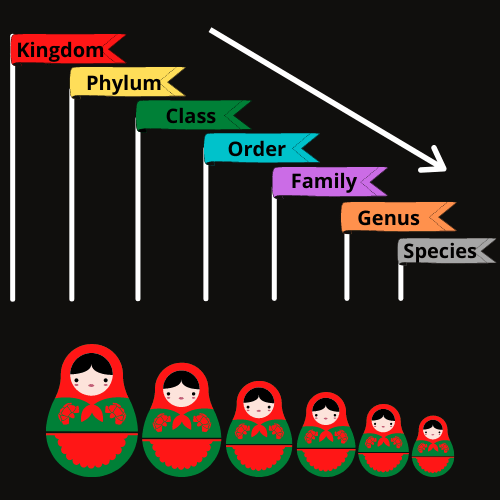Highschool biology lessons would be incomplete without reading a bit about Carolus Linnaeus, the Swedish Botanist who most definitely skipped his literature lessons for he truly missed the famous Shakespearean quote ‘What’s in a name?’. He ended up naming pretty much everything that exists around us. Although quite contrary to the previous supposition, Linnaeus was probably a logophile. He had a flair of naming things, and these names ended up making sense, so much so that they have been used by the entire world now.
God created; Linnaeus organized.
‘Deus creavit, Linnaeus disposuit’ was Linnaeus’ essentially boastful yet a shade truthful way of describing himself. Creationism was still scientifically in fashion then, and Linnaeus was a faithful creationist at heart. Systema Naturae, his magnum opus, paints a mighty strong perception of a slightly direct comparison of Linnaeus with Adam.
As newly-exposed-to-taxonomy eighth-graders, most of us surely came across ‘L.’, an abbreviation of Linnaeus’ name next to nearly every binomially sorted name that the authors chose to list out as examples. It was Hibiscus rosa-sinensis L., Panthera tigris L., Mangifera indica L., and many more! It certainly made remembering these cerebrally arduous names moderately painless.
A true lover of order, Linné (Swedes’ favourite sobriquet for Linnaeus) sketched out a step-wise, somewhat thorough (some may raise their swords here), incredibly exclusive system of naming organisms that thrived with us. The binomial nomenclature took the world by storm and made the lives of many researchers relatively less confusing. It is a logically satisfying way of denominating organisms appropriately.

Before we jump in and get to know how binomial nomenclature works, let us first understand how biological classification works. For without order, there is only chaos. Chaos leads to a series of catastrophic, anti-climactic events. Precisely the ones that Linnaeus discarded by establishing a brilliant system of classification. It simplified and organized the vast diversity of life by sorting them out into rational units of taxa. Taxonomy, a Grecian word, when broken down is derived from two words, taxis – arrangement and nomia – method. Thus, taxonomy is the study of general principles of scientific classification that look over an orderly organization of living beings according to their postulated natural relationships.
The biological edifice
Quite aptly named and deeming similarity with an actual kingdom, taxonomic hierarchy is a chronological series of categories, with kingdom bagging the highest rank and species pushed down to the lowest rank. These ranks are called taxa that form the fundamental unit of taxonomy. There are a total of seven taxa that are neatly arranged in an increasing or a decreasing order (perspective matters!). Descending succession is kingdom – phylum – class – order – family – genus – species.
This system ended the ‘taxonomists struggle till late 18th century’.
Kingdom forms the blanket layer which includes the rest of the taxa, while species is the lowest and the most specific rank. A certain species belongs to a specific genus, and that genus is a part of a particular family, and so on. Compare it to matryoshka dolls, say a set of seven dolls in this case. The biggest matryoshka doll, in this case, is the kingdom, while the smallest doll is the species.

Another comparison that might simplify our attempt to botanize with Linnaeus is probably the one with an ocean and its islands. The ocean is the kingdom in this scenario, while the islands are different species. A group of islands forms an archipelago. Here archipelago would be similar to a genus. The way an archipelago is a cluster of islands, a genus is a group of similar species.
A period of serial baptism
Once Linnaeus was sure of his well-oiled, perfectly working system of classification, he realized that there is no way in which these classified living things can be named simplistically. Back then a tomato, which is now scientifically referred to as Solanum lycopersicum, was an unending line of Latin words that were hard to remember even for a well-versed taxonomist. Before Linnaeus’ wonders, tomato went with Solanum caule inerme herbaceo, foliis pinnatis incises, racemis simplicibus. Even though one can spot simplicibus in the name, it was not simple at all! He took these matters of ineptitude quite earnestly and created the bible for naming anything and everything that shows a sign of life around us.
Binomial nomenclature successfully annihilated the plight of vernacular names and unnecessarily lengthened scientific names. According to this nomenclature, every organism has only one scientific name made up of two bits, a generic name and a specific epithet. Undeniably, it had its own set of rules to be observed. International Code for Botanical Nomenclature (ICBN) and the International Code for Zoological Nomenclature (ICZN) are the two codes that provide the basic protocol that needs to be followed before denominating any organism.
This nomenclature follows a few rules that can be memorized easily with the help of LIST –
L – Latinization of the scientific names is generally encouraged.
I – Italicized typed words are used. If the name is handwritten, one needs to underline it.
S – Start the name of the genus with a capital letter and the name of the species with a small letter.
T – There are two parts of a name – a generic name and a specific epithet.
Linnaeus had a ball with these rules, and it seems he genuinely loved to play around with Latin. He knew how to honour the ones worth it and well, mock the ones who crossed him. He went on a spree of naming things by baptizing a whopping 5900 species of plant and 4326 species on animals.
Siegesbeck under siege – Johann Siegesbeck, a Prussian physician and botanist, hit Linnaeus’ blacklist due to his spiteful reviews and intense criticism. After Siegesbeck called his system of classification, ‘loathsome harlotry’, Linnaeus had had it. He got back to him by naming a small, futile weed Siegesbeckia. The pen is ultimately mightier than the sword, eh?

Keeping up with Linnaeus
Even though he whipped up an ironclad plan to tag everyone for better communication, recently his plan has been attacked relentlessly. DNA analysis has changed the world. That has opened many more avenues and conditions which need to be taken into consideration to survive this explosion of knowledge. ‘Clades’ might hit the markets soon. Young renegades have raised questions owing to the absence of any link between classification and genetic relationships.
Nonetheless, this vividly sung and celebrated warrior remains the father of modern taxonomy. He is a deserving bearer of the name for he probably was the only person who created the largest species omnibus. His classification system is bulletproof and has been a parenting principle in so many scientific discoveries.
A usual victim of academic and verbal hate crime, taxonomy has persistently stood its ground. Every life science student just makes peace with it at some point. If you look at it from a different perspective, you will find the beauty in it. We all most definitely support things that are well ordered and we love to call out names (I have raised my shield). All we need to do is find out more ways to love it!
A few facts about the funny side of taxonomy that will surely crack you up:


. . .
Author & Illustrator:

Urja Kuber
Co-Founder at The Science Paradox


Good read. Great use of analogies!
I could relate to my struggle with Maths while reading this. Both Math and Taxonomy are complex but full of patterns, seeing them from a different perspective makes them interesting and fun.
Very well written. I liked the analogy of the matryoshka doll, I think that is perfect analogy to explain and to remember different taxa. This article can be the answer to the question which is generally asked to all biology students
“How do you remember or write or use such weird names of living organism ?”. keep writing & all the best !!